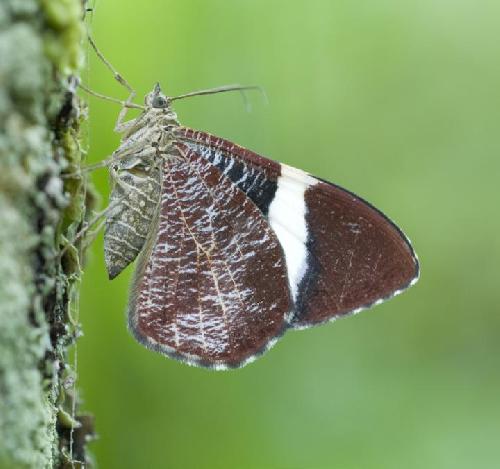Having collected thousands of moth and butterfly species from across Costa Rica, famous ecologist Daniel Janzen, University of Pennsylvania, and his team were yet to find out many of their names. When they sought help from Dr. Gunnar Brehm, the taxonomist realised he needed too much time to describe species in the framework of an extensive revision of the genus, especially as there are still only a few biologists skilled to do this.
In the end, he found a way to revise the Neotropical looper moth genus Hagnagora fast and efficiently through avoiding wordy descriptions, but focusing on diagnostic characters, illustrated external characters, genitalia structures and DNA barcoding instead. His study is available in the open-access journal ZooKeys.
Having been put together back in the 19th century, most of the species within the Neotropical moth genus Hagnagora had been described by 1913. In modern days, it seemed necessary for the taxon to be revised. As a result, Dr. Gunnar Brehm herein publishes a "concise revision" comprising twenty species. It includes two species that have been revived from synonymy, two subspecies reinstated to a species level, four species excluded from the genus and the description of three new to science. In honour of the people who had funded the research, the new species have been named after them.
 This is a Hagnagora anicata in Ecuador. Credit: Dr. Gunnar Brehm
This is a Hagnagora anicata in Ecuador. Credit: Dr. Gunnar Brehm
Following the revision, the research concludes not only the DNA molecules divergence between the separate species, but some subtle differences such as size, form of the wing blotches or the shape of the male genitalia.
Curious characteristic behaviour traits have also been noted within the genus. The representatives of the discussed genus fold their wings vertically while resting just like most butterflies and unlike the majority of related geometrid moths. Similarly, three of the revised species were noticed to be active during the day when they would often perch on moist substances like rotting plants, mud or dung, from whose fluids they would find vital nutrients.
The author stresses on the fact that taxonomists can hardly keep up with the pace inventories are being compiled, nor with the accelerating destruction of tropical rainforests. "Taxonomists therefore need to accelerate their workflows and try to make their papers useful not only to other taxonomists but for ecologists who need their support", Dr. Gunnar Brehm says.
"What used to be one species ten years ago, known as Hagnagora anicata, is now regarded as a complex of six species, and more might be discovered in South American rain forests", Brehm says. "Integrating information of molecules and morphology, as concisely as possible, appears to be one promising way to cope with the problem of slow taxonomy", he explains in conclusion.
source: Pensoft Publishers